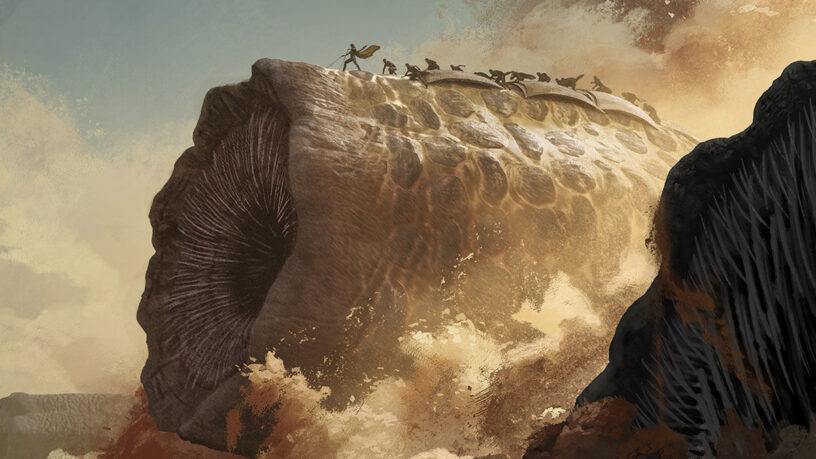Dune: Imperium – Uprising is a new, standalone tabletop game from Dire Wolf. It builds on the company’s previously-released Dune: Imperium game with a few changes and additional features, such as sandworms and spies. Uprising offers new strategic elements for players to enjoy and also incorporates visuals from the new Dune: Part Two movie.
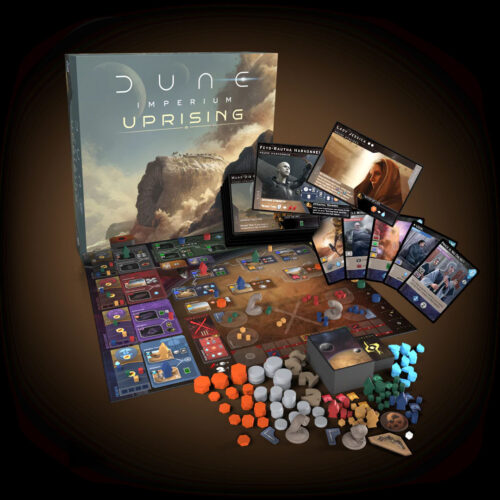
Overview
Dune: Imperium – Uprising feels familiar but also a little different to its predecessor game. The rulebook helpfully highlights those differences, which makes it easy to identify them if you’ve played Dune: Imperium. Some of the changes include the removal of the Mentat token and Foldspace cards, and the addition of the Shield Wall token, maker hooks tokens, sandworm figures for combat, and spy pieces. The sandworms—which come in both wood and plastic figures—were the most visually appealing addition, though it was challenging to obtain them for the conflicts.
As in the previous game, you pick a Leader card, which gives you unique abilities that you can use throughout the game. Then you send agents to board spaces to build alliances and take other actions involving spice and other elements from the Dune story. This are also deck-building elements, as you start with ten cards and—over the course of the game—get opportunities to add new cards to your deck (or remove ones). These cards determine where you can send agents and what choices you have during gameplay.
The four factions remain the same: the Emperor, the Guild, the Bene Gesserit, and the Fremen. You build influence with these factions by sending agents to their associated faction tracks, and every few spaces along the track you can gain a victory point. Intrigue cards are associated with the Bene Gesserit and allow you to obtain extra resources, increase your influence with factions, gain leverage in combat, or take other special actions.
Gameplay
There are five phases to gameplay in each round, and rounds continue until a player reaches 10 or more victory points.
In Phase 1, a new conflict card is revealed. This sets the scene for what the rewards will be for winning in the battle which happens at the end of each round. Then players draw five cards from their card deck to make up their hand for the round.
In Phase 2, you take an Agent Turn and send an agent to one of the spaces on the board, or you take a Reveal Turn, which you’ll usually only do once you’ve run out of your agents. Cards in your deck have two sections on them at the bottom: one section if you’re using it during your Agent Turn, and another section if you’re using it during your Reveal Turn. So, you might choose to use a card differently depending on which section will be more useful to you at that time.
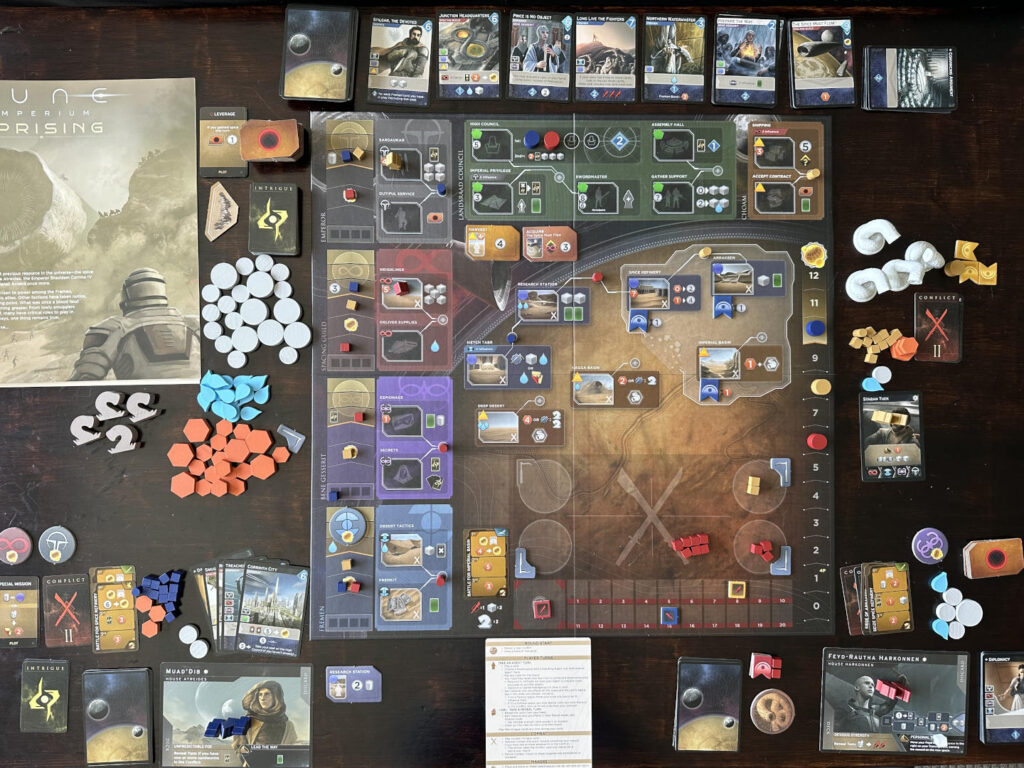
To take an Agent Turn, you have to play a card and you can only send your agent to a space on the board that has a matching icon on that card (with the exception of spies, explained below). This game has three board spaces that require you to have at least two influence with a particular faction (e.g. the Emperor), adding two more spaces to the one from the predecessor game.
Other spaces require you to spend resources to go there, so you have to plan ahead to be able to send agents to the whole board. It is easy to get caught out by not having the right payment or influence to go to a space or use a card, and this often forces you to change your whole turn. On the other hand, you may not be able to visit a space because another player is already there. That’s where the new spy mechanic comes in.
Spies are little cylindrical wood pieces in player colors that are represented on the board by a tube icon. On your turn, they can be placed on an observation post area if there’s not a spy already there. Alternatively, if you already have a spy on an observation post, you can take it back. Spies are beneficial because they let you have more flexibility with agent placement. If you get a card with a new spy eye icon, you can send your agent to a space connected to an observation post that you occupy, regardless of whether that space is already occupied by another agent. If you recall a spy, you can draw an extra card to your hand.
Like the original Dune: Imperium, recruitment for the conflict at the end of each round takes place on spaces that have cube icons indicating that you can place troops in your garrison. But to deploy troops to the conflict arena, you have to place an agent in a space with a crossed swords icon. Sometimes this can be a two-step process to get troops from your supply onto the arena.
The new sandworm figures are worth an extra combat strength compared to a regular troop but can only go straight into combat and not in the garrison—they’re giant sandworms after all. In addition, before you can deploy a sandworm, you have to obtain maker hooks from the Sietch Tabr board space. The other restriction with sandworms is that they can’t be used in a conflict if the battle is taking place behind the protection of the Shield Wall, although this can be blown up.
You take a Reveal Turn when you’re done with your agents and your Agent Turns, or for some reason you choose not to use all of your agents. You then reveal all the cards that you have left in your hand and gain the effects in the bottom section of the cards. These might be extra combat strength or the persuasion points that let you buy cards from the deck to build up your deck. This is also the time to set your combat strength if you have troops participating in the conflict. Then, you put all your cards in your discard pile and your turn is over.
Phase 3 is the Combat Phase. This only affects players with troops participating in the conflict and is the time to play any combat intrigue cards to alter what’s happening in the battle. Whoever has the most combat strength wins the conflict and gains the reward shown on the conflict card for first, second, or third place (this changes based on the number of players and whether there is a tie). After a conflict is resolved, all of the sandworms are returned to the general supply, ready to be summoned again in a future conflict.
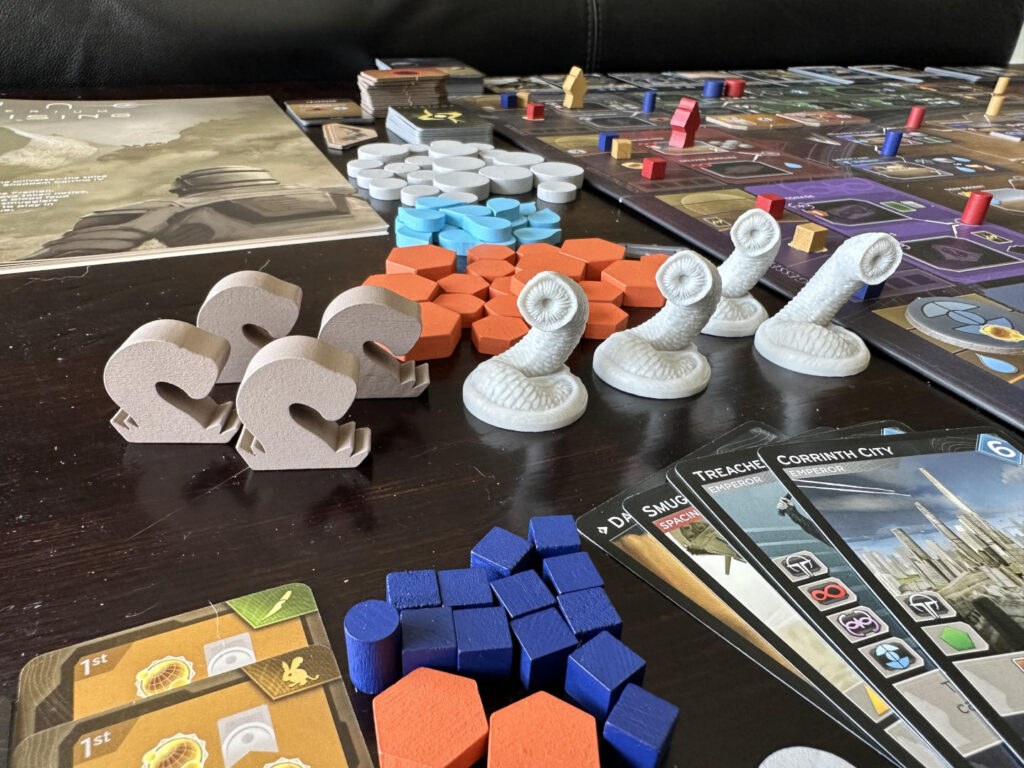
Uprising introduces two new features to consider when resolving a conflict. The first are battle icons. These three symbols—crysknife, desert mouse, and ornithopter—appear on Conflict cards, and your goal is to try to obtain two matching icons to gain a victory point. You begin the game with a random symbol on an Objective card, giving you a head start toward a victory point. The second is the doubling of rewards by using a sandworm in combat. This gives extra incentive to recruiting a sandworm early and often.
Phase 4 is a quick set-up phase where you add spice to the board spaces with the spice icon if no one has been there that turn. Finally, Phase 5 is a victory condition check to see if anyone has reached 10 or more victory points on the victory score track, or if the Conflict card deck has run out. Either of these conditions triggers the end game. If neither condition has been met, you play another round. If a condition has been met, you now have a chance to play any end game Intrigue cards, so remember that victory points can still shift even during the game’s final moments.
Mini-Expansion: CHOAM Module
The game also comes with a mini-expansion called the CHOAM Module that provides a little bit more strategy to the game. This expansion adds 20 CHOAM contracts to the game, though only two are visible at any one time, as well as four more intrigue cards and four more cards for deck-building. The CHOAM contracts provide smaller objectives during gameplay such as going to a certain board space to get a reward.
Backwards Compatibility and Different Player Counts
This game is designed to be compatible with all previous Dune: Imperium material, including the original base game and both its expansions: Rise of Ix and Immortality. In fact, additional game components are included to support integrating Rise of Ix. Rules for combining elements from these products are included at the back of Uprising‘s rulebook.
You can play with six players in a two-team mode that’s explained in a rulebook supplement. Two players take on the leader role for their team, with either Muad’Dib or Shaddam Corrino IV. The leaders don’t have armies or win rewards for the conflict, but they can still recruit troops for their team members. They can use cards and board spaces like regular players but instead of going up in influence with factions, they activate their team members to do so.
In the end, the team’s score is made up of the individual scores of team members.
If you want to play the game solo or with two players, that’s also on option. In that scenario you’ll need to play with an automated rival, either using physical cards or an app that simplifies this process. The rival doesn’t play the game exactly the same, but it takes up board spaces, engages in combat, and generally interferes with your strategy, which is what it needs to do to balance the game. The rulebook has a helpful supplement that explains how to change setup and how to play one and two player games. Unlike the original Dune: Imperium, Uprising includes aggressive as well as passive automated rivals.
Reaction
It was easy to pick up Dune: Imperium – Uprising having already played the predecessor game and expansions. The rulebook made it a smooth process to see what changes had been made, and the changes were enough to add new strategy without completely changing how the game works or all of the previous strategy tactics I had used.
The sandworms were a special highlight because they come with cool 3-D figures. I struggled to get them out into the conflict though since there are only two board spaces that let you deploy them, and first you have to obtain maker hooks. This element will require some more planning in future games. Having the battle icons on the conflict cards was an interesting way of adding another dimension of decision-making, about whether to engage (or not) in certain conflicts to get a matching icon.
I also enjoyed having the CHOAM Module contracts as shorter-term objectives with rewards, but sometimes they became a distracting goal and interfered with my overall strategy. It would be nice if there were a way to cycle those in the case when neither of the two contracts on the board are attractive to players.
It was more challenging to go to certain board spaces, because you had to have influence with a certain faction to go there, so that tripped me up sometimes not having enough influence early on in the game. However, this then drove me to seek influence with those factions and make sure that I had enough faction cards with those icons.
The addition of spies fits very well with the theme of Dune and political intrigue. This was a noticeable change that enhanced the gameplay and strategy for me, as I quickly realized how beneficial they could be in not just one but multiple aspects of the game. My opponent over-committed to spies and that strategy backfired, since they had all of their spies out all the time, but not always in the best places. While they could have pulled some back, it became harder late in the game to get them back out. On the other hand, I only could get a few spies out but I made better use of them. I believe with more plays, I’ll be able to enhance my use of the spies as part of a larger strategy for broader agent placement and card handling, and ensure that I buy cards with the spy eye icon.
Dune: Imperium – Uprising provides enough changes from its predecessor to feel different, and it requires new strategies to make the most of these changes. I enjoy both games but particularly like the added elements in Uprising, such as sandworms and spies, because they align well with the Dune story and theme. For people who already own both Dune: Imperium and its Rise of Ix expansion, this game provides a comparable experience. For those who don’t already have those games, Uprising will likely provide a more balanced game that doesn’t need an expansion. It has the benefit of more comprehensive card sets, more pieces, and more strategic elements.
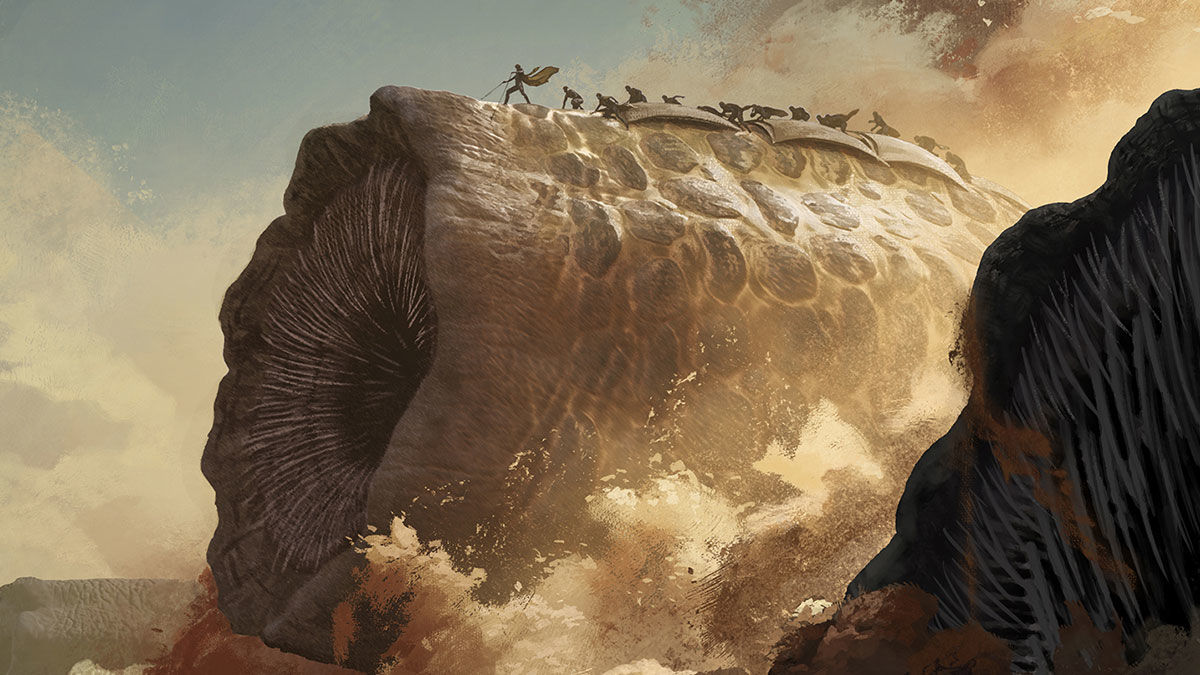
Thanks to Dire Wolf for providing Dune News Net with a review copy Dune: Imperium – Uprising .
For further insights into this board game and its design, check out our interview with the game’s creators on the Dune Talk video podcast.


